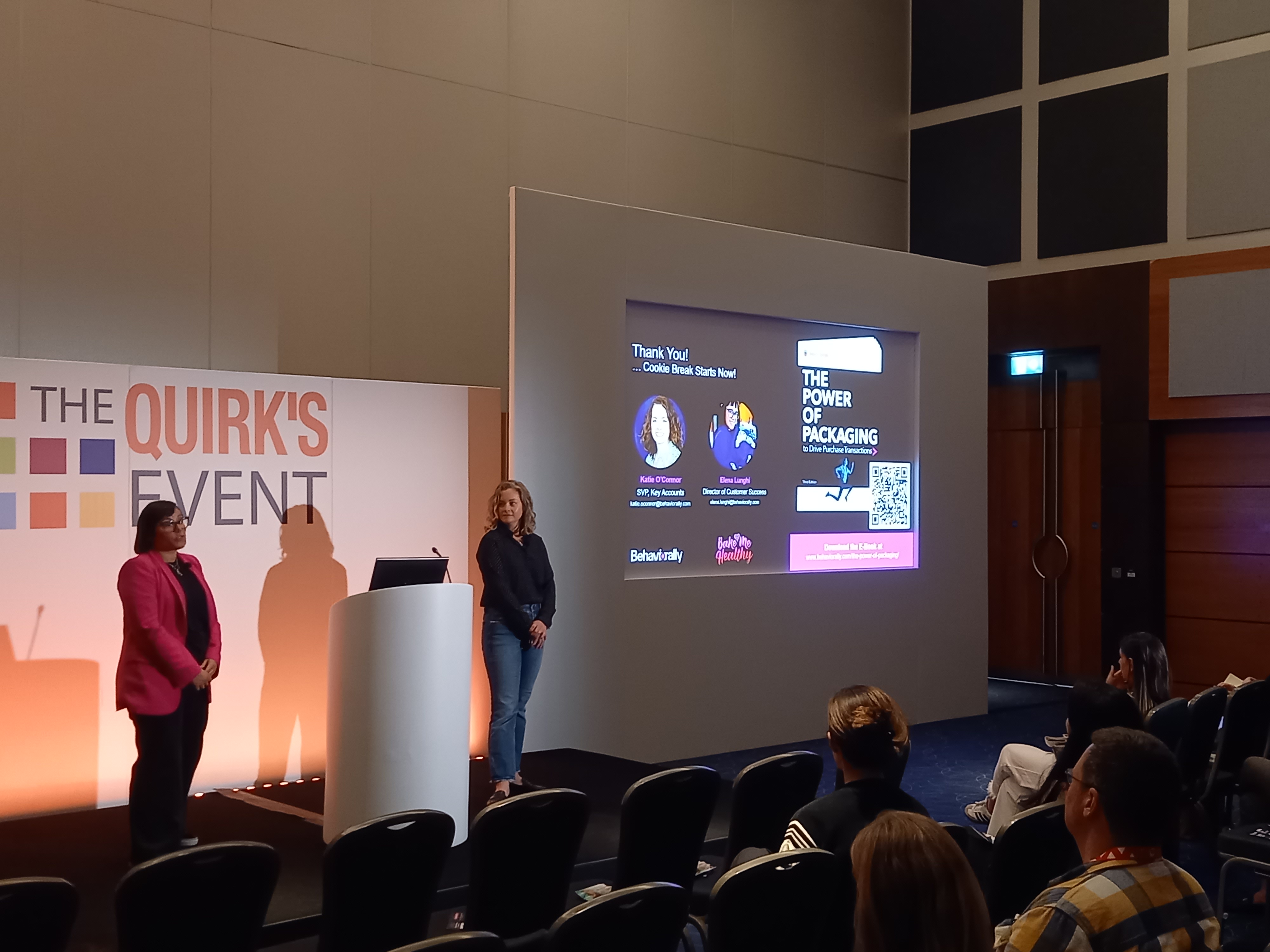The latest from Quirk's Event – London 2025
Editor's note: Elena Lunghi is director of customer success at Behaviorally headquartered in New York City, New York. This is an edited version of an article that was originally published under the title “Insights, Impact, & Innovation: The Latest from Quirk’s London 2025.”
 Quirk’s Event – London 2025 offered a clear lens into how the research industry is evolving in the age of AI. While speed and automation took center stage, deeper conversations throughout the event focused on data quality, trust in technology and how insights can drive real business impact.
Quirk’s Event – London 2025 offered a clear lens into how the research industry is evolving in the age of AI. While speed and automation took center stage, deeper conversations throughout the event focused on data quality, trust in technology and how insights can drive real business impact.
Here’s what stood out to the Behaviorally team:
AI in research: efficiency vs. insight
AI dominated the show floor and session agendas, with many platforms emphasizing speed – automating repetitive tasks and accelerating delivery timelines. But the conversation didn’t end there.
In one session, Edwin Taborda from L'Oréal emphasized that the next phase of our industry’s transformation will be driven by how we leverage AI to combine and synthesize diverse data sources.
This isn’t just about speed. AI can unlock and scale insights in a way that could never be done before.
Furthermore, attendees raised important questions about how these tools influence the quality of insights and their strategic usefulness. The MRS and its newly launched Data Quality Excellence Pledge challenged clients and suppliers alike to raise the bar for data quality.
If our insights cannot be trusted, we cannot make the impact that so many people discussed during the two-day event.
Remember: true value lies in balancing efficiency with depth.
AI adoption in the European market
While there is interest in AI across European organizations, adoption remains measured. European brands are looking for AI superiority to dislodge the status quo.
Due to these expectations, the core concerns regarding the use of AI include output reliability, data integrity and explainability.
At the event, Sara Green from Bahlsen shared how her team has steadily expanded their use of AI-moderated conversations over the past two years. This approach allowed them to bring large scale qualitative research into the business and gave them access to deeper insights, at speed.
“AI moderators never get bored of interrogating data,” Green said.
In another session, Elizabeth Ackerley from Danone emphasized how they are using AI insights to drive consumer centricity. This enabled everyone across the business, including the CEO, to engage with consumers globally.
There is growing momentum, but success hinges on building trust and confidence in AI-generated results.
Emerging SaaS platforms and the push for integration
 SaaS-based analytics platforms highlighted their ability to deliver real-time dashboards, streamline reporting and enhance competitive intelligence.
SaaS-based analytics platforms highlighted their ability to deliver real-time dashboards, streamline reporting and enhance competitive intelligence.
While these tools clearly improve workflow efficiency, a recurring theme was the need to ensure that increased speed doesn’t come at the cost of insight quality. The challenge remains: translating data into clear, actionable decisions.
Shopper insights driving cross-functional value
Caroline Ashley, shopper insight lead at Nestlé, delivered a compelling session on how shopper insights are being embedded across departments to inform broader business decisions. Their approach of restructuring teams around shopper behavior enables faster responses to market changes and strengthens category growth strategies. This suggests a continued shift toward holistic applications of consumer insight.
Heineken offered another strong example of cross-functional impact. Serena Smith, head of category at Heineken, presented their category growth framework, developed by synthesizing multiple data sources from across the organization.
The framework was workshopped collaboratively across teams and is continuously championed within the business. Employees are encouraged to demonstrate how their strategies connect to it and to keep it top of mind, they even distributed notebooks with the framework printed on the cover.
AI’s role in innovation and decision impact
 Discussions also explored the role of AI in accelerating the packaging innovation cycle.
Discussions also explored the role of AI in accelerating the packaging innovation cycle.
Leveraging behavioral data alongside AI can allow for faster concept testing and iteration without compromising on consumer relevance. The combination of algorithmic tools and real-world consumer input offers the potential for more responsive and informed innovation workflows.
Beyond innovation, AI is also playing a growing role in improving performance at the point of decision-making.
For example, Amazon has moved beyond traditional feedback surveys to uncover the elements that truly build consumer trust – an essential factor in long-term brand growth. They use tools like eye-tracking to evaluate which features and messaging on their platform influence trust perceptions, recognizing that every touchpoint either reinforces or erodes consumer confidence.
These examples highlight the expanding potential of AI not just to streamline processes, but to shape more meaningful consumer experiences across the path-to-purchase.
Market research industry’s AI era
Quirk’s Event – London 2025 highlighted a pivotal moment for the industry. AI is no longer a future trend – it’s a present reality. But as adoption grows, the need for thoughtful, transparent and human-centered applications becomes even more critical.
The event sparked valuable conversations about how to ensure technology enhances, not replaces, the power of true insight.
